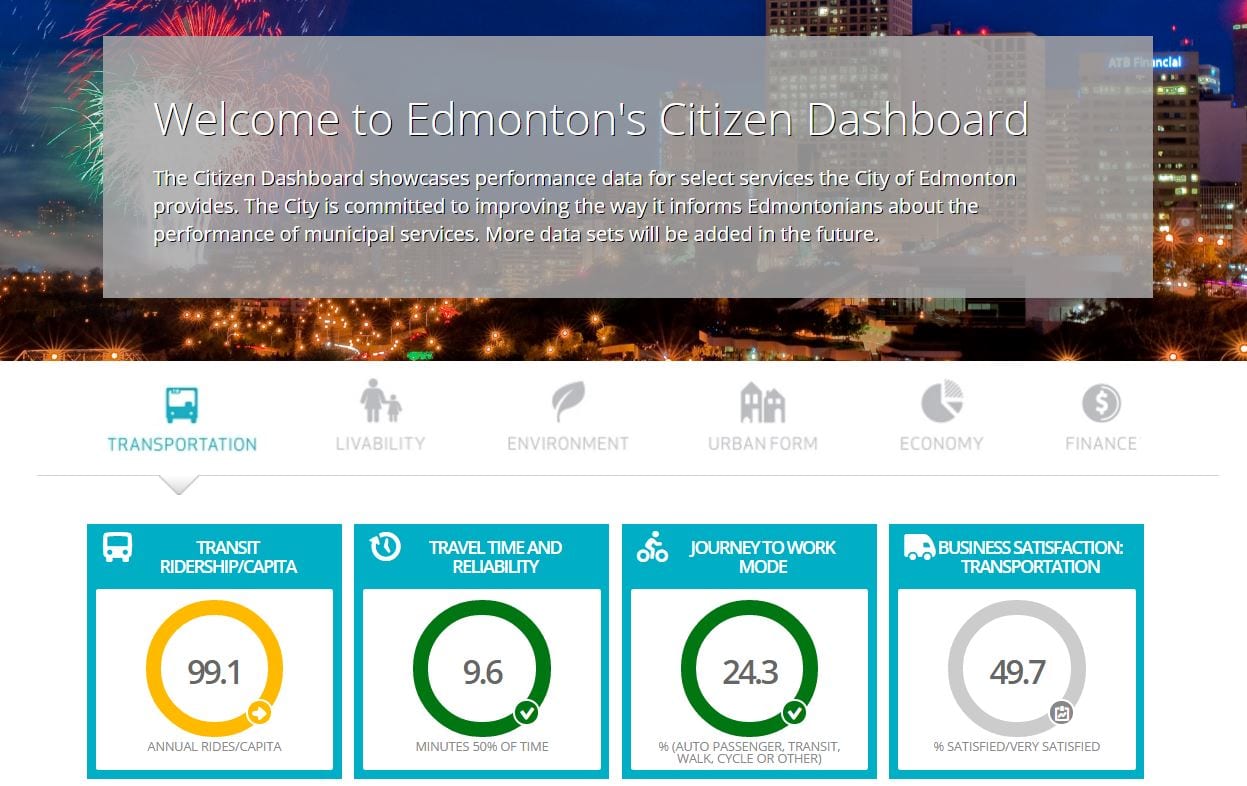Open by Default: Building an Open City
One of my main priorities is running an open and effective local government, so today’s report from our Open City and Analytics group was very encouraging.
Since 2015 the Open City team has won national and international recognition for how it approaches open government. For example, Edmonton has been named ‘Canada’s Most Open City’ for two years running by the Public Sector Digest and Open Data Exchange, plus a pile of other awards which Edmontonians can be proud of, for everything from our Citizen Dashboard, to our open data portal and our overall strategy.
‘Open government’ is a movement with a core principle ‘that citizens have the right to access the documents and proceedings of the government to allow for effective public oversight.’ It means all of the data that the city collects or uses should be open and accessible for anyone. Very quietly, as is often our way, Edmonton has become a world leader in open government.
I’m a bit of a data nerd, so you’ll have to bear with me. But I truly believe the next frontier for governments is how we can use data and analytics to make better evidence-based decisions. So, to know that we’re leading the way in this rapidly-evolving field is very encouraging. The City’s analytics team (Analytics Centre of Excellence – ACE) has already worked with over a dozen business units in the city to build dashboards that help improve data-driven decision making within our departments. They’ve got a wonderful roster of projects already under their belt, including one with the City’s parks department: using the data generated by our lawn mowers and turf maintenance equipment, our analytics team identified ways to reduce travel time by simply mapping more direct routes between locations and reassigning mowers more strategically around the city. So what, you ask? They will be able to cut travel time by 20%, which directly translates to significant fuel savings and time savings. The project was so successful, we’re now going to apply the same methodologies to our snow plowing and sanding operations to improve their timeliness and efficiency.
With every passing year the City makes more and more data sets available to everyday Edmontonians. In just two years the number of data visualizations available in our open data catalogue jumped from 594 to 1,241, and from 10,000 downloads to nearly 25 million so far in 2016. The openness of this information has led to all kinds of innovation by citizens and private companies. For example, someone built an app that correlates mosquito counts with golf courses so you can plan a less irritating round of golf. And the highly successful 3rd-party Transit App pulls live location data directly from our Smart Bus Program to help users navigate the bus system in a more reliable way.
All of this information has tremendous potential to influence how we plan, build and live in our city. The more data-driven we can be in our decisions, the more effective we can be in delivering services to Edmontonians. This open city culture is spreading throughout city administration and there’s now a group of 60+ city employees who regularly gather to learn about new analytics tools and share their skills and projects with one another. I can’t wait to hear about the next revelation they’ll uncover about the sometimes simple ways we can run a more efficient and effective local government. Along the way, they’re showing that we can do things better and more efficiently by being Open.

The report link is not working, it is here : http://sirepub.edmonton.ca/sirepub/cache/2/5smtyjpwvk245wy051qlfhkd/59702012062016085622727.PDF
Don, your post is titled “Open by Default” – but that concept is never actually addressed in your post. From the outside looking in, we’re still very request-driven and there doesn’t seem to be a tonne of pro-activity in exposing data. It is city policy (C581) that the city is open by default, but how is this actually manifesting itself in operations? When data is developed, is an action strategy also developed detailing its exact path to openness? And if so, why is that strategy not shared with requesters immediately when they request data sets?
Every time a FOIP is completed, that data is now public. Why aren’t we aligning the FOIP process with an open-data process to make that data more widely available and decrease request load?
Don’t get me wrong, we’re in a good place. But you said it yourself, it’s easy to rest on our laurels, we need to be taking hard looks at what we can do better, and it’s time to start tackling the harder openness problem now that the low-hanging fruit has been collected. So what specific action is being taken to ensure that the “open by default” part of the policy is actually being enacted in practice?
Fixed – thanks.
Open by default is Council’s policy expectation. It’s where we want to get to, not where we are yet. Some of your other questions around FOIP will be covered in a report coming in January.